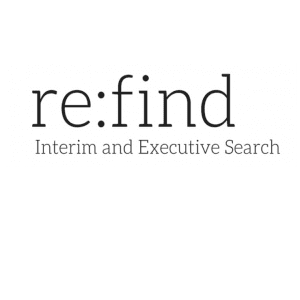Successful projects don’t just happen. They need to be managed effectively.
John Hardie, is an experienced programme, project, transformation, and change manager. Here he gives us his insights into what makes a successful programme.
A Great Business Case
Any project or programme undertaken in this climate needs to demonstrate clear business value and align with the incumbent’s vision and goals.
Benefits can be described quite simply using the IRACIS model:
- How will this project improve our revenue, IR?
- How will this project help us avoid costs, AC?
- How will this project help us improve our service, IS?
Projects that fail to address these 3 simple metrics, in whichever form, suffer from a lack of purpose, leading to subdued, if any, support, from the senior team.
Great Communications
At the heart of every good project is a great communication plan. Everyone can draw up a standard comms model, yet it is the execution that differentiates the great from the amateur.
Mapping out benefits early, allowing the story to evolve and be heard, is key, especially on those tougher projects where staff may lose out to automation, or similar. A great comms plan will mitigate against those types of scenarios and will make delivery and your relationships reap many more benefits.
Having conversations with people, understanding their thoughts and feeling, building rapport is key to building bridges. Bringing teams, colleagues and suppliers together so they are included in the changes around them. Honest and transparent communications will break down barriers, and raise questions and answers which is how we all evolve. And listening will help us to understand how the reader or user likes to receive their communications.
Communicating a single story that’s consistently communicated from top to bottom, avoids the trap doors that could materialise in the project.
Super Sponsors
Having great sponsors can be the ‘make or break’ for any project, and it’s key that they are invested in the project, that they are engaged for the duration, and have multiple channels where their input can be gathered, outside of any scheduled meeting. They will have significant pressures on their time, and if you can lighten the load in any way, it will be appreciated.
It’s worth remembering it’s the sponsors who give the project the authority to act, keeping them close is essential, allow them their voice, they will act as ambassadors, and be honest, good or bad, the sponsors are senior members of the business team for good reason, experience, and it’s a well that you can drink from in the time of need.
With sponsors, it’s key to remember the old adage. ‘You’ve got two ears and one mouth, try to use them in that proportion.
Positive Business Engagement
Having clear objectives, a great communications plan, and super sponsors allow the project to engage with the business, providing a baseline for positive engagement.
Tell people what you’re doing, and why you’re doing it, your kick-off meeting should include as many people impacted as possible.
The more people you engage with, the greater the empathy and understanding between teams and about the project. The hope is that this means less friction along the way. Good leadership is always shown by example.
And, don’t forget, in order to build rapport and strengthen relationships, stay in touch and build consistent interactions to gain trust with those involved. Remember the trust equation – the three formulas that build trust are credibility, reliability, intimacy = Trust.
So trust the message, listen carefully, understand concerns, help where you can, even when it’s not directly connected to the projects, one of the benefits of building a trusted relationship is that people will come to you to assist in items outside the direct scope, look upon this as an opportunity, not a chore, embrace it, and you’ll reap the rewards.
Embrace Supplier as Partners
I find this all too obvious, a large client and a small supplier can cost the small supplier money, with unplanned delays. Equally a larger supplier and a small business can leave the smaller company out on a limb, as other larger clients demand resources.
Unfortunately, I have seen too many projects fail when size is not taken into consideration. Small suppliers are required for their innovation, equally larger suppliers are required for the maturity of their products, and if this difference is recognized and a partnership model is embraced, things can thrive. Clearly, these differentials must be recognised and addressed and held in place, if need be, with SLA’s for both parties to sign-up for and to.
The key is honesty, recognise the respective sizes and how best form a relationship, smaller suppliers will sometimes require support, while larger suppliers, through no fault of the staff on the ground, may have burdensome processes to follow. Recognising, this disparity and having mechanisms in place, that allow peer-to-peer relationships to build, which will then become partnerships.
A Clear Set of Objectives
Having a scope document, or PID, Charter, Mandate, whatever you choose to call it, is key. It needs to be challenged, using the benefits model, IRACIS, to ensure you’re doing work that has value and adds value to the business.
Further, the scope document needs to have an agreed phasing. if you’re in an iterative process, these could be Sprints in the Agile world, then it must include measurable and attributable outputs for each phase: e.g. the new infrastructure will support the extended commercial footprint, moving from 1000 users to 2500 users. For example, we have an early test case, in fact, the Scope document should be the place from where the test cases are generated.
Change Management
Every project will deal with change management. Put simply, there must be a mechanism to control and manage change, with teams on the ground, stakeholders and suppliers. And even manage cost-cutting across projects if need be. Remember, when engaging with suppliers, their commercial health depends on a reasonable and fair approach to change management.
Too many companies try to adhere completely to the legalese within a contract, to bind a supplier. Hopefully, most sensible suppliers would walk away from these entrapments. It’s a good idea to adopt the ‘is this reasonable’ approach, and can we work together to overcome this difficulty. Sometimes when time is pressing, we must ask ‘what can I leave out?’.
Change will happen, perhaps a change in priority, a funding cut, a key resource leaves the project, pressure on the schedule. One thing is sure, and change is inevitable, agree how these changes will be handled, try to avoid onerous, multi-level approval protocols, empower the PM with support from the PMO to authorise local changes, but be ready to deal with it.
Planning
One assumes you have a working plan, which appears achievable at the outset, too many projects suffer from ‘Heroic Failure’ syndrome.
Plans need to be honest, practicable, resourced correctly, have their dependencies and assumptions built into the schedule. They must be able to accommodate the arrival of risks, both known and unknown, and schedule time for issue resolution, which will come up, like it or not. Mitigation is key, alternate pathways are essential, a plan B, so to speak.
False optimism has killed and derailed many well-intentioned projects. Too many plans are based on optimism and hope, and not based on the reality of the work ahead. Again, to paraphrase ‘Plan for the worst, and Hope for the Best’, make sure you have it covered. Don’t commit to schedules that don’t make sense, when resources are stretched. You will end up defending an ever-tightening noose.
If you are given an unreasonable schedule, then use the MVP model, or minimum viable product or delivery, as the initial goal, using a work prioritisation key to determine any future stages.
John Hardie brings 30 years of experience across a range of industries from software development to large scale transformational change focussing on business outcomes, delivering value-based benefits using empirical evidence as a baseline, with the programme, change and transformation experience delivering effectively in complex and demanding environments with teams across the UK and internationally
James Cumming is our MD, Interim and Transformation Search specialist. Please get in contact with him directly to discuss any of these topics further.



